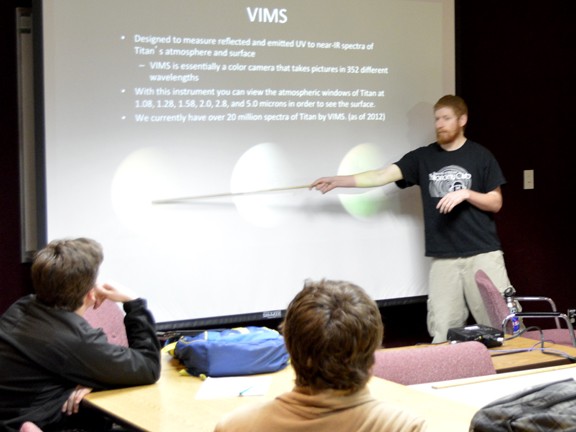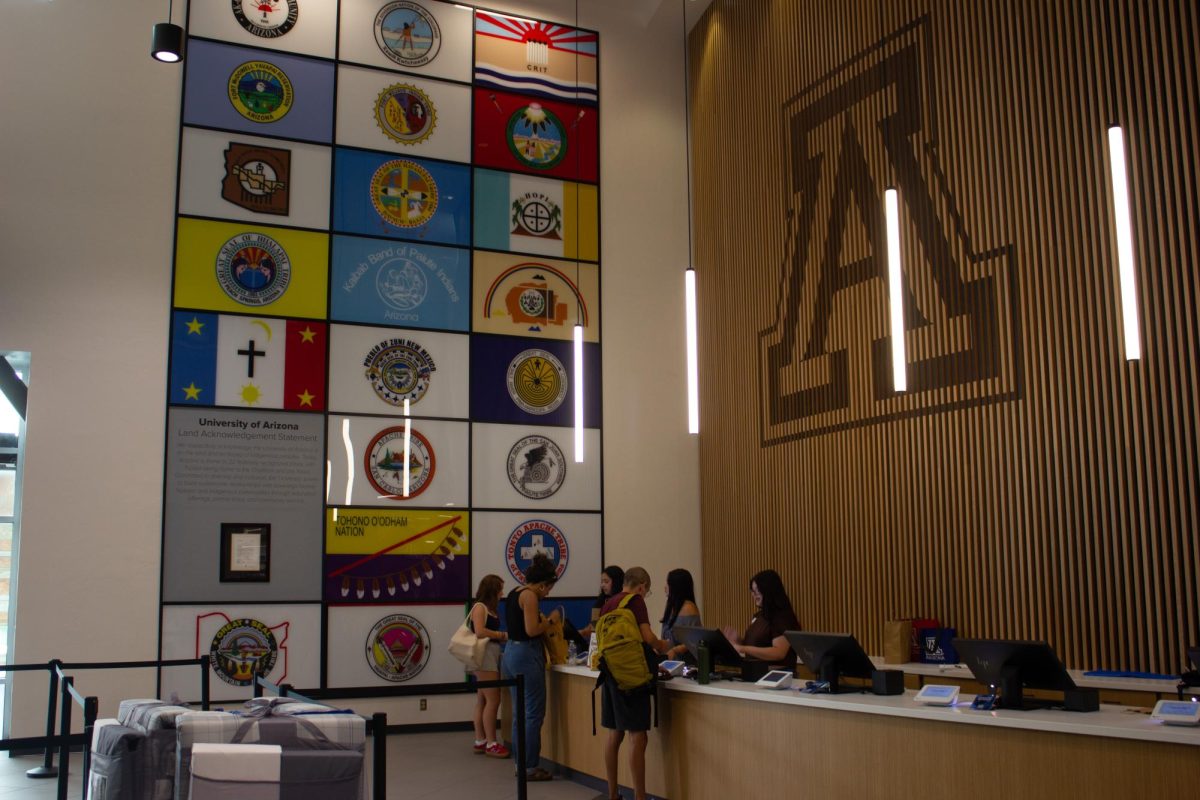The UA Astronomy Club is researching planets light years away, helping in the search for life on other planets and offering valuable research experience to undergraduates.
In January, the club had its first peer-reviewed article published in Monthly Notices of the Royal Astronomical Society.
The article reported research from an extrasolar planet project that began in 2009 and is still ongoing, according to Jake Turner, co-founder of the project and a 2011 astronomy and physics graduate. Turner is a research technician at the Lunar and Planetary Laboratory.
The extrasolar planet project articles had 26 student authors, with student researchers contributing from New York, Indiana and England.
The goal of the research was to use the transit method to detect the magnetic fields of a planet called TrES-3b, which is 1,300 light-years away from Earth, Turner said. The planet is known as a “hot Jupiter” because it is extremely close to its star and it is
bigger than Jupiter, according to Turner.
The transit method involves measuring the light given off by the star and then studying the “light curve” when the planet TrES-3b crosses in front of the star. By studying the difference in light, researchers are also able to study the magnetic field of the planet, according to Turner.
Studying the magnetic field of TrES-3b allows researchers to learn about the internal structure of the planet and figure out if it has moons. These are the building blocks for finding life outside our solar system, Turner added.
“The magnetic field of Earth protects us from the solar radiation or the high particle solar radiation, and so without our magnetic field, Earth wouldn’t be habitable,” Turner said. “We have not been able to detect the magnetic field in any planet outside our solar system. And so if we can detect them on the biggest planets, then that can be the foundation to detect them on the smaller planets, and then eventually we can search for life outside our solar system.”
Allison Towner, a senior studying physics and astronomy and a member of the Astronomy Club, became involved with the extrasolar planet project in fall of 2010.
Towner was highly involved with data reduction for the project, which involves removing all the ambient light that is collected when studying TrES-3b; essentially, researchers need to isolate the light that they want.
The project is ongoing, so as students graduate, new students will take over. This will allow students to gain research experience and see if the field of astronomy is a field they wish to enter.
“Our original intent for the project was not, ‘We want to be published.’ It was always, ‘Oh, yeah, it would be really nice if we got published,’ but it was meant as research experience for undergraduates,” Towner said, “because research experience can be a hard thing to get.”
Towner plans on going to graduate school, and she said she feels being involved with this project gives her an edge for admission.
Now, the project is looking at 12 other planets, and the club hopes to publish more academic articles in the future, Turner said. Since the spring 2012 semester, the extrasolar planet project has been offered as a course, and students can earn one to three credits, depending on how much work they do, Turner added.
Anyone can get involved with the project, even if they are in areas of study that are not traditionally involved with this type of work, according to Amanda Walker-LaFollette, president of the Astronomy Club and a junior studying astronomy and physics.
Walker-LaFollette stressed the significance of having student work published.
“It is a really big deal we got this published … We are all students who are working on this project, and it is all students who were writing the paper,” Walker-LaFollette said. “And basically everything we did, everything we have done, is all students.”









